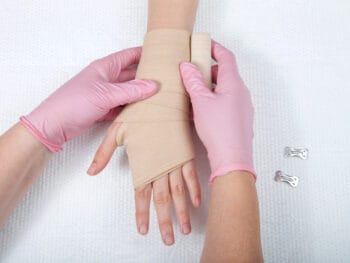
Understand the “Rules of the Road”
Before you take a recorded statement of an injured worker, a member of the claim management team needs to understand the legal implications. As with most things in workers’ compensation cases, it is important to understand how the law in one jurisdiction varies from another. Failing to understand this issue can impact the admissibility of the recorded statement later on in the case.
Develop a Strategy First
Once a claim comes into your office, you will have an opportunity to review various documents. These documents include a First Report of Injury, medical records and other reports. Before taking a recorded statement, it is important to “size up” the parties involved in the claim. This can include speaking to the claimant informally as you gather information.
Click Link to Access Free PDF Download
“13 Research Studies to Prove Value of Return-to-Work Program & Gain Stakeholder Buy-In”
During this phase of a claim investigation, it may also be important to talk with an attorney if you feel the claim will result in litigation. Part of this discussion can also include the development of defenses and subrogation matters. Following your internal policies and procedures is also important.
Issues of Admissibility
It is important that the recoded statement is admissible later on in the life of a workers’ compensation claim. This results in many considerations when you anticipate the need for taking this statement:
- Timelines required for when the statement needs to be taken, if any;
- The method in which the statement should be taken. This is an important consideration if the employee has retained an attorney; and
- In most jurisdictions, the recorded statement needs to be signed by the claimant. If this is the case, be aware of any barriers you might have in getting the recoded statement transcribed and sent to the employee.
Recorded Statement Best Practices
Taking a recorded statement costs money and time. It is important to plan wisely.
- Some attorneys recommend that you wait at least 30 days to take a recorded statement. This allows you to develop defenses and obtain important information. It is likely that by waiting a short period of time, you will develop key facts it is important to understand later on in the case.
- Receive necessary internal approvals for using a recorded statement. In jurisdictions that require the statement to be signed by the injured worker, it is important to have procedures in place where the timelines can be met.
- Develop effective questions for the recorded statement. Make sure that you obtain the necessary background information about the claimant. This will include information about their vocational, educational and medical background. It is also important to have the claimant describe work injury in detail. This will come in useful when working with a medical expert or at a deposition.
- Listen and be flexible. Remember that everything the claimant is saying is being recorded. Take some notes as you go, but remember that if you are not listening to what is being said, you could be missing important information. Use a written outline, but also be prepared to change gears so the statement has a natural flow.
Recorded statements can also be taken of lay witnesses. Be sure to know the procedures and protocols if you plan on taking the statement of a person who is not a party to the workers’ compensation claim.
Conclusions
Recoded statements are an effective tool in workers’ compensation claim discovery. While this is a rather inexpensive tool, it is important that you understand the law and what it requires when using this method. Failing to develop a strategy can be costly.
 Author Michael Stack, CEO Amaxx LLC. He is an expert in workers’ compensation cost containment systems and helps employers reduce their workers’ comp costs by 20% to 50%. He works as a consultant to large and mid-market clients, is a co-author of Your Ultimate Guide To Mastering Workers Comp Costs, a comprehensive step-by-step manual of cost containment strategies based on hands-on field experience, and is the founder & lead trainer of Amaxx Workers’ Comp Training Center, which offers the Certified Master of Workers’ Compensation national designation.
Author Michael Stack, CEO Amaxx LLC. He is an expert in workers’ compensation cost containment systems and helps employers reduce their workers’ comp costs by 20% to 50%. He works as a consultant to large and mid-market clients, is a co-author of Your Ultimate Guide To Mastering Workers Comp Costs, a comprehensive step-by-step manual of cost containment strategies based on hands-on field experience, and is the founder & lead trainer of Amaxx Workers’ Comp Training Center, which offers the Certified Master of Workers’ Compensation national designation.
Contact: mstack@reduceyourworkerscomp.com.
Workers’ Comp Roundup Blog: http://blog.reduceyourworkerscomp.com/
©2022 Amaxx LLC. All rights reserved under International Copyright Law.
Do not use this information without independent verification. All state laws vary. You should consult with your insurance broker, attorney, or qualified professional.
















